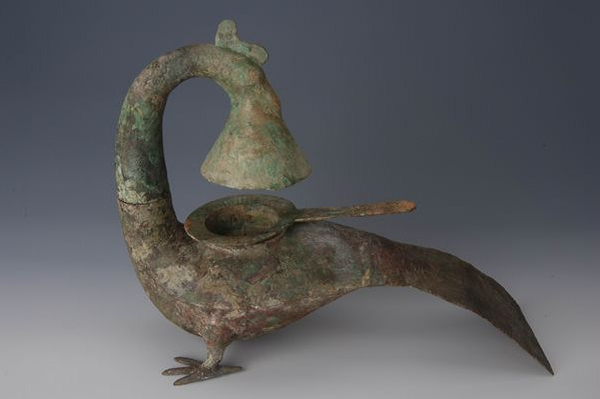Copper phoenix lamps

One of two copper phoenix lamps in the Museum of Guangxi Zhuang Autonomous Region. [Photo/gxmuseum.cn]
The Museum of Guangxi Zhuang Autonomous Region boasts two copper phoenix lamps. Each copper phoenix lamp has a height of 33 centimeter, a length of 42 cm, and a width of 15 cm. They date back to the Western Han Dynasty (206 BC-AD 24) and were unearthed in Hepu, Guangxi Zhuang autonomous region in 1971.
Each lamp is shaped like a phoenix bird looking back, with its feet separated and its tail feathers hanging down to the ground. The neck can be turned or taken apart in order to adjust light and clean out the ash from the lamp body.
The lampshade is connected to the neck and the abdominal cavity. The abdominal cavity is hollow to store water. When the candle in the lamp holder is ignited, the soot gets into the neck tube through the lamp cover. It is then introduced into the abdominal cavity, and finally dissolves into the water.
The lamps are unique in style and advanced in technology. The casting of the lamps adopt the Han Dynasty sub-casting method and their ornamentation adopt an emerging engraving pattern process popular in southern China during the Western Han Dynasty, especially in the Lingnan area.
Copper phoenix lamps boast an ingenious design. They are the first in the Han Dynasty to install a smoke pipe on the oil lamp and apply the environmental protection idea to the design and manufacturing of a lamp. Widely valued during their time, they are also revered in the history of lamps in the world.














